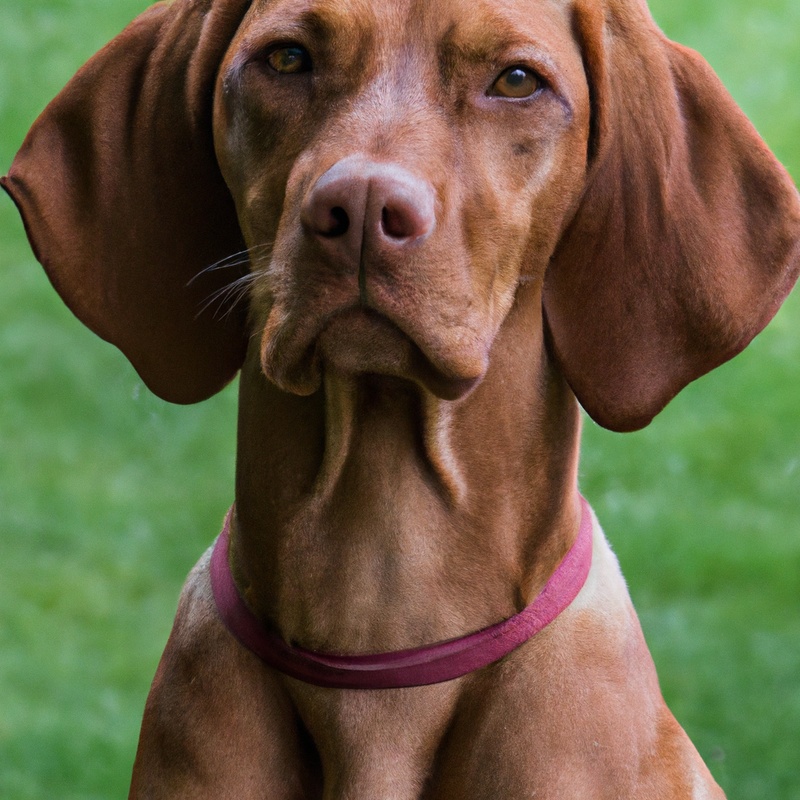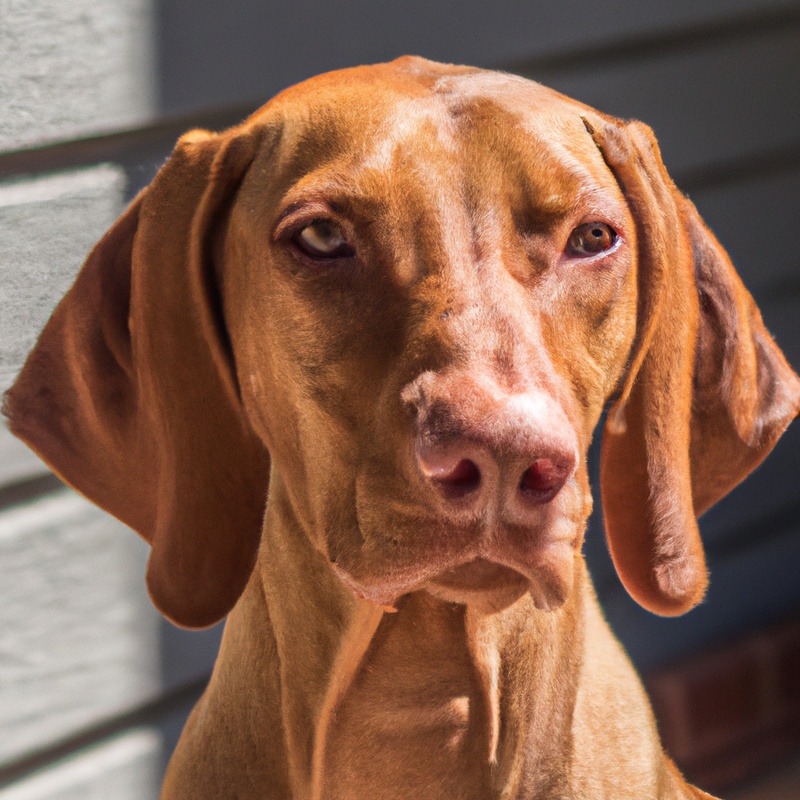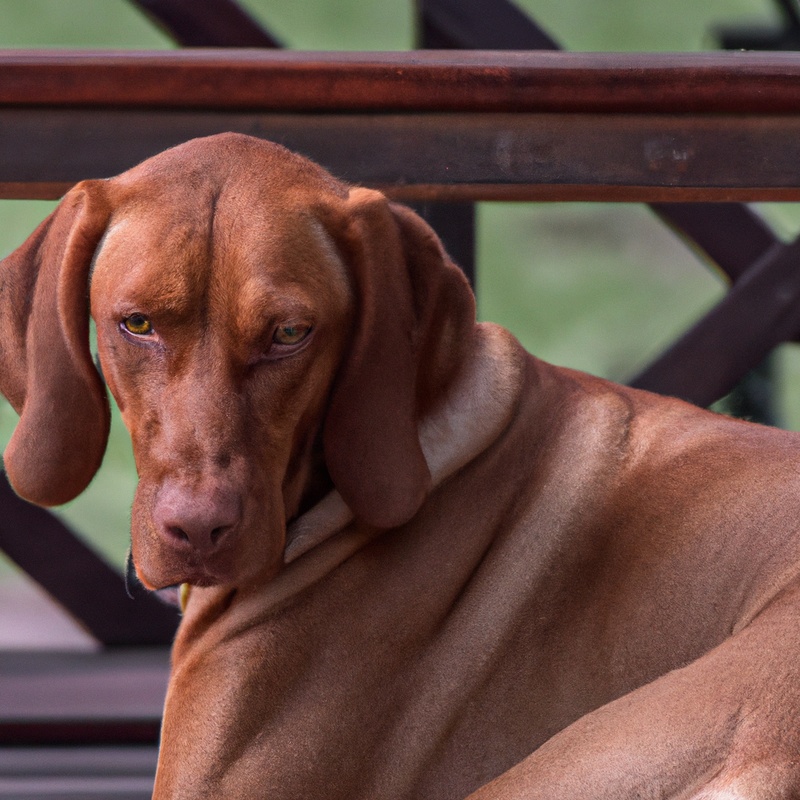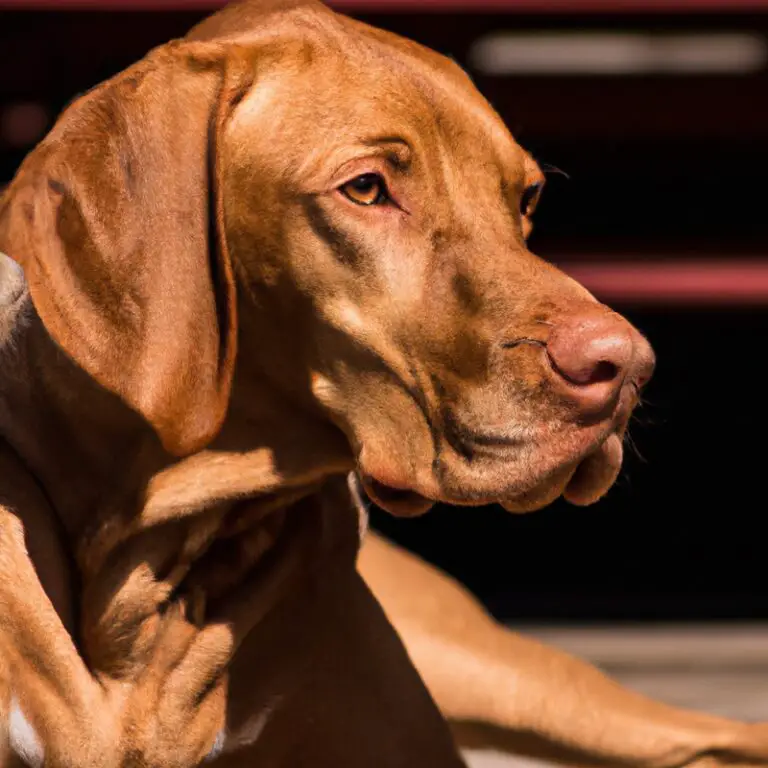What Are The Potential Challenges Of Owning a Vizsla?
Key Takeaways:
- Vizslas require a high level of physical activity and mental stimulation to thrive.
- Proper socialization is crucial for Vizslas due to their sensitive and affectionate nature.
- Vizslas have a strong prey drive and may not be suitable for homes with small pets.
- Being a Velcro breed, Vizslas often develop separation anxiety and need consistent companionship.
Are you considering adding a four-legged companion to your family?
If so, it’s crucial to do your research and understand the potential challenges that come with owning a Vizsla.
Known for their striking appearance and affectionate nature, Vizslas are energetic and intelligent dogs that require a significant amount of time and commitment.
In this article, I will shed light on the unique characteristics and temperament of Vizslas, their exercise and mental stimulation needs, as well as the potential challenges you may face when bringing one into your home.
So, if you’re ready to embark on this exciting journey, let’s explore the world of Vizslas together.
| Challenges |
|---|
| Lots of exercise needed |
| Separation anxiety |
| High energy level |
| Requires mental stimulation |
| Can be prone to certain health issues |
| Needs a lot of attention |
| Destructive behavior if not properly exercised |
Introduction
Introduction: So, you’re thinking about getting a Vizsla? Well, you’ve come to the right place! In this article, we’ll dive into the potential challenges of owning one of these beautiful and energetic dogs.
While Vizslas can make wonderful companions, it’s important to be aware of the specific characteristics and needs of this breed.
By understanding the challenges upfront, you’ll be well-prepared to provide the best care and environment for your new furry friend. Let’s get started!

Brief Overview of Vizslas
Characteristics and Temperament of Vizslas
Vizslas have a number of notable characteristics and a unique temperament that sets them apart from other dog breeds. These dogs are known for their striking appearance, with their short, rust-colored coats and sleek, muscular build.
Vizslas are highly energetic and require ample exercise to keep them happy.
In terms of temperament, Vizslas are known to be affectionate, friendly, and loyal. They love being part of a family and thrive on human companionship.
These dogs are also known for their intelligence, which makes them highly trainable.
However, it’s important to note that Vizslas can be prone to separation anxiety if left alone for long periods of time. They also have a strong prey drive, so it’s important to provide proper socialization and training to prevent any potential behavior issues.
Overall, Vizslas are loving and devoted companions, but they do require a significant amount of attention, exercise, and mental stimulation to thrive.

Exercise and Mental Stimulation Needs of Vizslas
Vizslas have high exercise and mental stimulation needs.
They are an active breed and require daily physical activity to release their energy.
A minimum of one hour of vigorous exercise per day is recommended.
Mental stimulation is also important to keep them engaged and prevent boredom.
Interactive toys, puzzle games, and training sessions can help fulfill their mental stimulation needs.
Regular exercise and mental stimulation are essential for a happy and well-behaved Vizsla.
Potential Challenges of Owning a Vizsla
Vizslas are energetic, intelligent, and affectionate dogs, but owning one does come with some challenges. One challenge you may face is their need for plenty of exercise.
Vizslas are an active breed that requires daily physical activity and mental stimulation to stay happy and avoid boredom.
Another challenge is their separation anxiety. Vizslas thrive on human companionship and can become anxious and destructive when left alone for long periods.
They do best in homes where someone is present most of the time or in households with other pets to keep them company.
Proper socialization is crucial for Vizslas because they can be prone to shyness and timidity if not exposed to different people, animals, and environments from a young age. Early and ongoing socialization is important to promote a confident and well-rounded Vizsla.
Additionally, Vizslas have a strong prey drive and may chase after small animals or become easily distracted by interesting scents.
This can make recall training challenging, as they may be more inclined to follow their nose than listen to your commands. Consistent training and a secure outdoor area are key to manage this instinctual behavior.
Lastly, Vizslas have a short coat that doesn’t provide much protection from extreme temperatures.
They are more sensitive to cold weather and may require additional layers or shelter during winter months. While these challenges can be managed with proper care, training, and a commitment to meeting their needs, it’s essential to consider them before bringing a Vizsla into your home.
With the right approach, you can enjoy a wonderful companionship with this loving and active breed.
Separation Anxiety and Velcro Dog Syndrome
Separation Anxiety and Velcro Dog Syndrome are two potential challenges of owning a Vizsla. Vizslas are known to form strong bonds with their owners and can become very attached.
This can lead to separation anxiety, where they become distressed when left alone.
They may exhibit behaviors such as excessive barking, destructive chewing, and house soiling. Vizslas may also display Velcro Dog Syndrome, constantly wanting to be by their owner’s side.
This can make it difficult to have any personal space or to complete tasks without their constant attention.

High Energy Level and Exercise Requirements
Vizslas are known for their high energy levels and require plenty of exercise.
They have an abundance of physical stamina and mental energy.
It is essential to provide them with regular and challenging exercise to keep them happy and healthy.
Daily walks, runs, or engaging activities such as agility training or playing fetch are great ways to meet their exercise needs.
Mental stimulation, such as puzzle toys or obedience training, can also help tire them out.
Remember, a tired Vizsla is a happy Vizsla!
Socialization and Training Requirements
Socialization and training are key for Vizsla owners. It’s important to expose them to various people, animals, and environments from an early age.
Providing positive social experiences will help them develop into well-rounded dogs.
Training should focus on positive reinforcement techniques, as Vizslas are sensitive and respond well to rewards. Consistency and patience are key when teaching them commands and manners.
Regular exercise is also crucial to keep their high energy levels in check.
Potential Health Issues
Vizslas are generally healthy dogs, but like any breed, they can be prone to certain health issues.
Potential health concerns for Vizslas include:
- Hip dysplasia: This is a condition where the hip joint doesn’t develop properly, causing discomfort and mobility issues.
- Progressive retinal atrophy (PRA: PRA is a degenerative eye disease that can lead to vision loss over time.
- Epilepsy: Vizslas may have a genetic predisposition to seizures, which can be managed with medication.
- Allergies: Some Vizslas may develop allergies to food, environmental factors, or certain substances.
- Cancer: Like many dog breeds, Vizslas can be prone to various types of cancer, including mast cell tumors.
Regular veterinary check-ups, a nutritious diet, regular exercise, and a clean and safe environment can help minimize the risk of these health issues.
Monitoring your Vizsla for any signs or symptoms of these conditions and seeking prompt veterinary care when needed is crucial for their well-being.
Grooming and Maintenance Needs
Grooming and Maintenance Needs: Vizslas have short, smooth coats that are relatively low maintenance. They have minimal shedding, which means less fur to clean up around the house.
Brushing their coat once a week helps to remove any loose hair and keep their skin healthy.
Their nails should be trimmed regularly to prevent them from getting too long and causing discomfort. It’s also important to check and clean their ears regularly to prevent infections.
Regular exercise is crucial for Vizslas, as they are energetic and high-energy dogs.
They require daily physical and mental stimulation, such as long walks and interactive play sessions. Proper dental care is also essential.
Brushing their teeth regularly and providing dental chews or treats can help maintain their oral hygiene.
Overall, while Vizslas do require regular grooming and maintenance, their needs are relatively straightforward and manageable. By providing them with proper care and attention, you can keep your Vizsla healthy and happy.
Time and Commitment Required
Owning a Vizsla requires a significant amount of time and commitment.
These dogs are active and energetic, requiring daily exercise and mental stimulation.
You should be prepared to devote a couple of hours each day to activities like walks, runs, or play sessions.
Vizslas also crave human companionship and can become anxious or destructive if left alone for long periods.
They thrive on positive reinforcement training and social interaction, so be ready to spend time training and socializing your Vizsla to ensure a happy and well-adjusted pet.
Frequently Asked Questions
Frequently Asked Questions:
1. Are Vizslas good family pets?
Yes, Vizslas make great family pets.
They are affectionate, loyal, and love to be around their human companions.
They are known for being good with children and are generally friendly and social towards other dogs and animals.
2. How much exercise do Vizslas need?
Vizslas are an active breed and require plenty of exercise.
They need daily walks, runs, or play sessions to help burn off their energy.
Plan for at least an hour of exercise each day to keep your Vizsla happy and healthy.
3. How do I groom a Vizsla?
Grooming a Vizsla is relatively easy.
Their short coat requires minimal maintenance.
Regular brushing and occasional baths are usually sufficient.
Keep their ears clean and nails trimmed, and you’re good to go.
4. Are Vizslas easy to train?
Vizslas are intelligent dogs and generally eager to please, which makes them relatively easy to train.
However, they can be a bit stubborn at times, so consistent and positive reinforcement-based training methods work best.
Socialization from a young age is also important.
5. Can Vizslas be left alone at home?
Vizslas are known for their strong bond with their owners and are prone to separation anxiety if left alone for long periods.
They thrive on human companionship and do best in homes where someone is around most of the time.
If you need to leave them alone, gradually introduce them to alone time and provide mental stimulation and interactive toys.
6. Do Vizslas have any health issues?
Like any breed, Vizslas have some potential health concerns to be aware of.
These include hip dysplasia, allergies, epilepsy, and certain eye conditions.
Regular vet check-ups and a nutritious diet can help manage their health and prevent potential issues.
7. Are Vizslas good with other pets?
Vizslas are generally good with other pets when properly socialized from a young age.
However, their strong prey drive may make them less compatible with smaller animals like cats or rabbits.
It’s important to supervise interactions and gradually introduce them to other pets.
8. Are Vizslas suitable for first-time dog owners?
While Vizslas are wonderful dogs, they may not be the best choice for first-time dog owners.
Their high energy levels, training needs, and potential separation anxiety can be challenging for inexperienced owners.
However, with dedication and commitment, first-time owners can successfully raise a Vizsla.
Remember, each Vizsla is unique, and their individual personalities and needs may vary.
It’s essential to do thorough research and evaluate your lifestyle before deciding if a Vizsla is the right fit for you.
Final Verdict
Owning a Vizsla can be both rewarding and challenging.
While their affectionate nature and loyalty make them wonderful companions, their high energy levels and exercise requirements can be demanding.
They require dedicated time and commitment for training, socialization, and mental stimulation to prevent behavioral issues.
Additionally, Vizslas are prone to separation anxiety and may exhibit Velcro dog syndrome.
Potential health issues and grooming needs should also be considered.
Overall, owning a Vizsla requires a responsible and active owner who can provide the love, time, and attention these beautiful dogs deserve.







